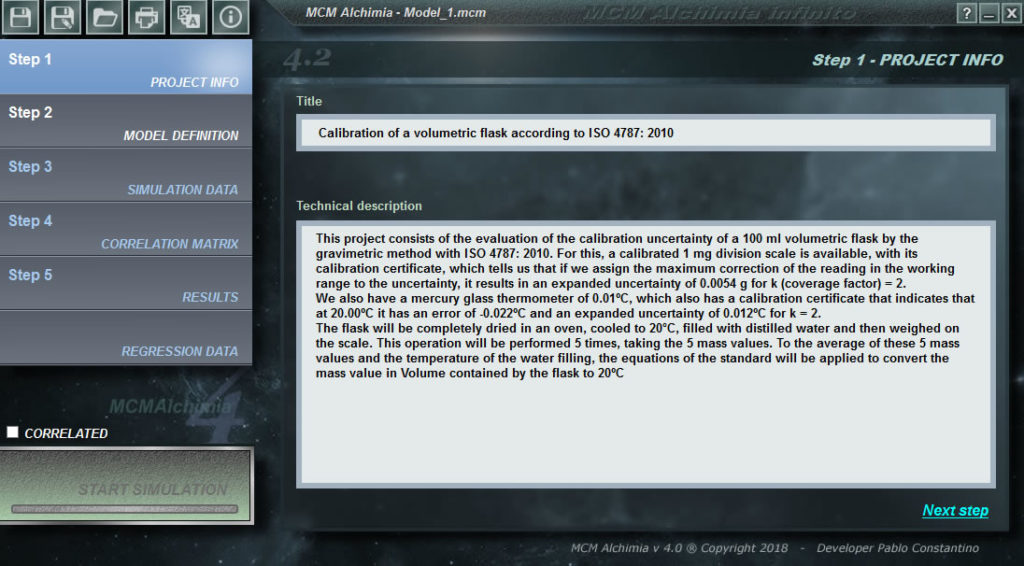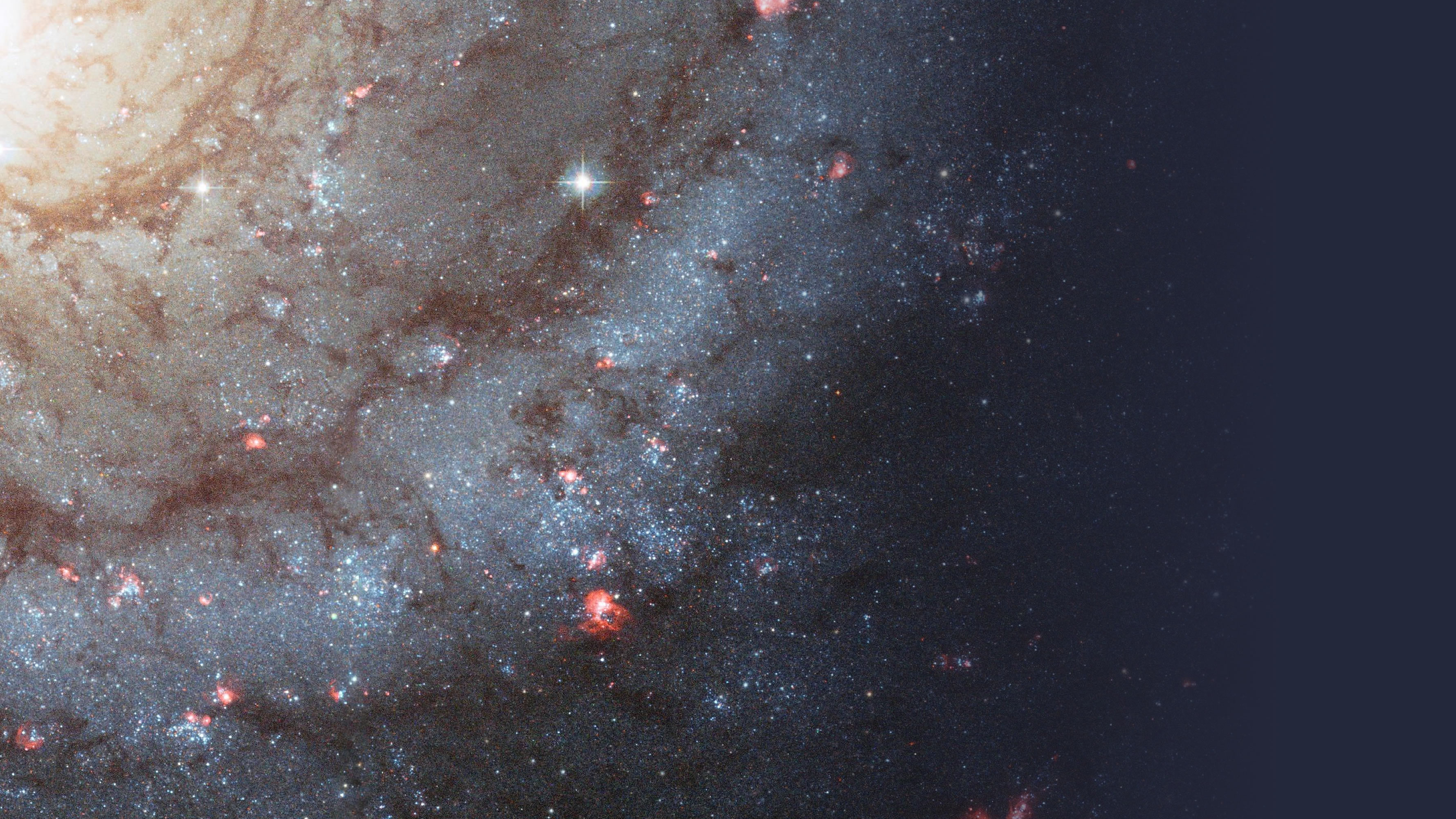First project – Step 1
Several estimations of uncertainty made with MCM Alchimia for advanced models of tests, calibrations or analytical techniques, can be consulted in several published scientific works, both by the software developer, as well as by other researchers in various branches of science. However, for a first contact with the application, in this document we will make a first simple calculation project to know the operation and the possibilities of the application. As an example, we will perform the calculations relevant to the calibration process of a calibration calibrated by the gravimetric method, consistent with the guide ISO 4787: 2010 Laboratory glassware – Volumetric glassware – Methods for use and testing of capacity
- Run the application from the desktop. Estra will already open in step 1.
- We write in the field Title : Calibration of a volumetric flask according to ISO 4787: 2010
- In the field Technical data we replace the pre-existing text with the technical description of our essay. There we can write the following text:
This project consists of the evaluation of the calibration uncertainty of a 100 ml volumetric flask by the gravimetric method with ISO 4787: 2010. For this, a calibrated 1 mg division scale is available, with its calibration certificate, which tells us that if we assign the maximum correction of the reading in the working range to the uncertainty, it results in an expanded uncertainty of 0.0054 g for k (coverage factor) = 2.
We also have a mercury glass thermometer of 0.01ºC, which also has a calibration certificate that indicates that at 20.00ºC it has an error of -0.022ºC and an expanded uncertainty of 0.012ºC for k = 2.
The flask will be completely dried in an oven, cooled to 20°C, filled with distilled water and then weighed on the scale. This operation will be performed 5 times, taking the 5 mass values. To the average of these 5 mass values and the temperature of the water filling, the equations of the standard will be applied to convert the mass value in Volume contained by the flask to 20ºC - Having entered this data we can continue to the next step. By clicking on the link or the Step 2 button.

More help

